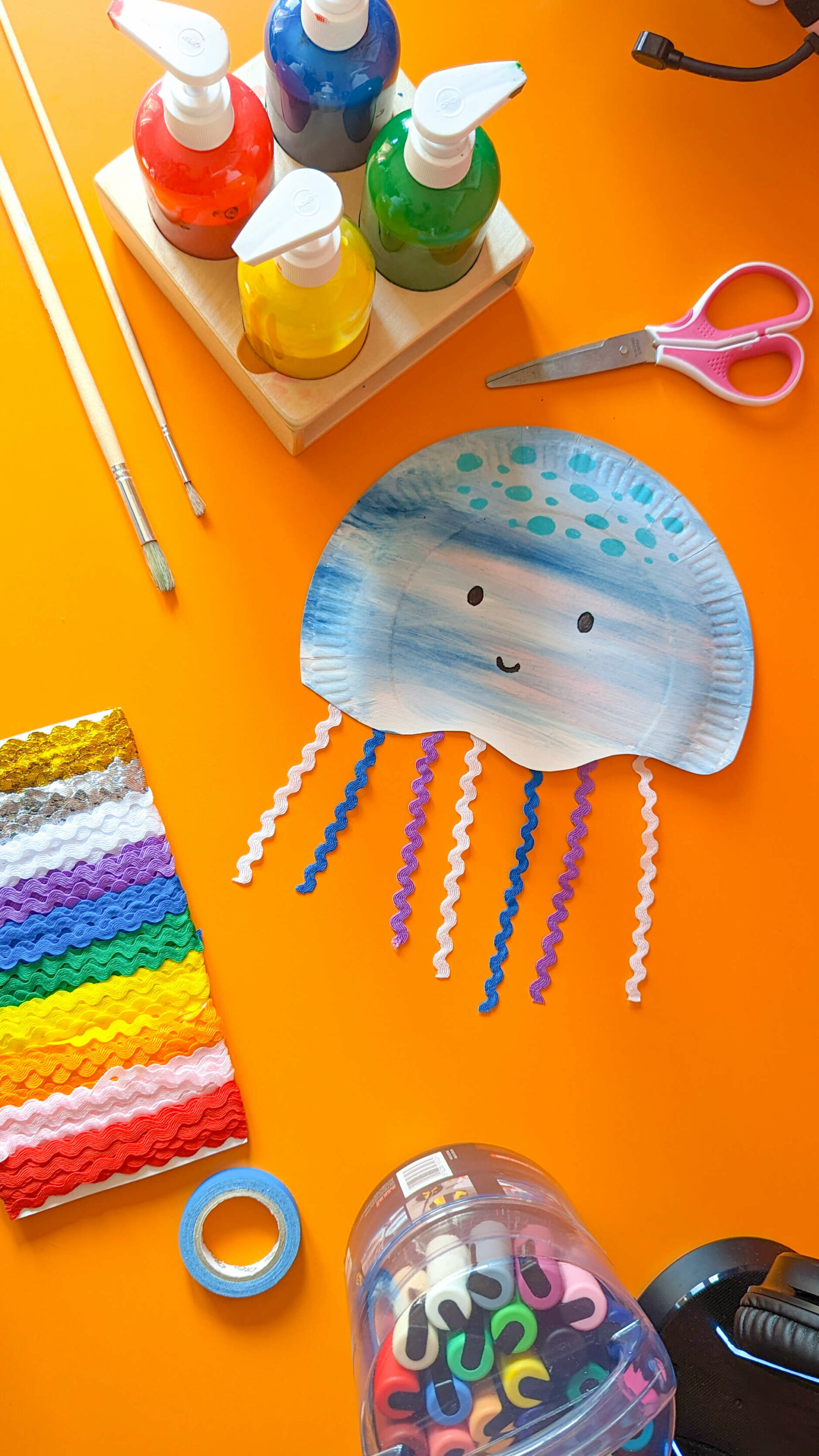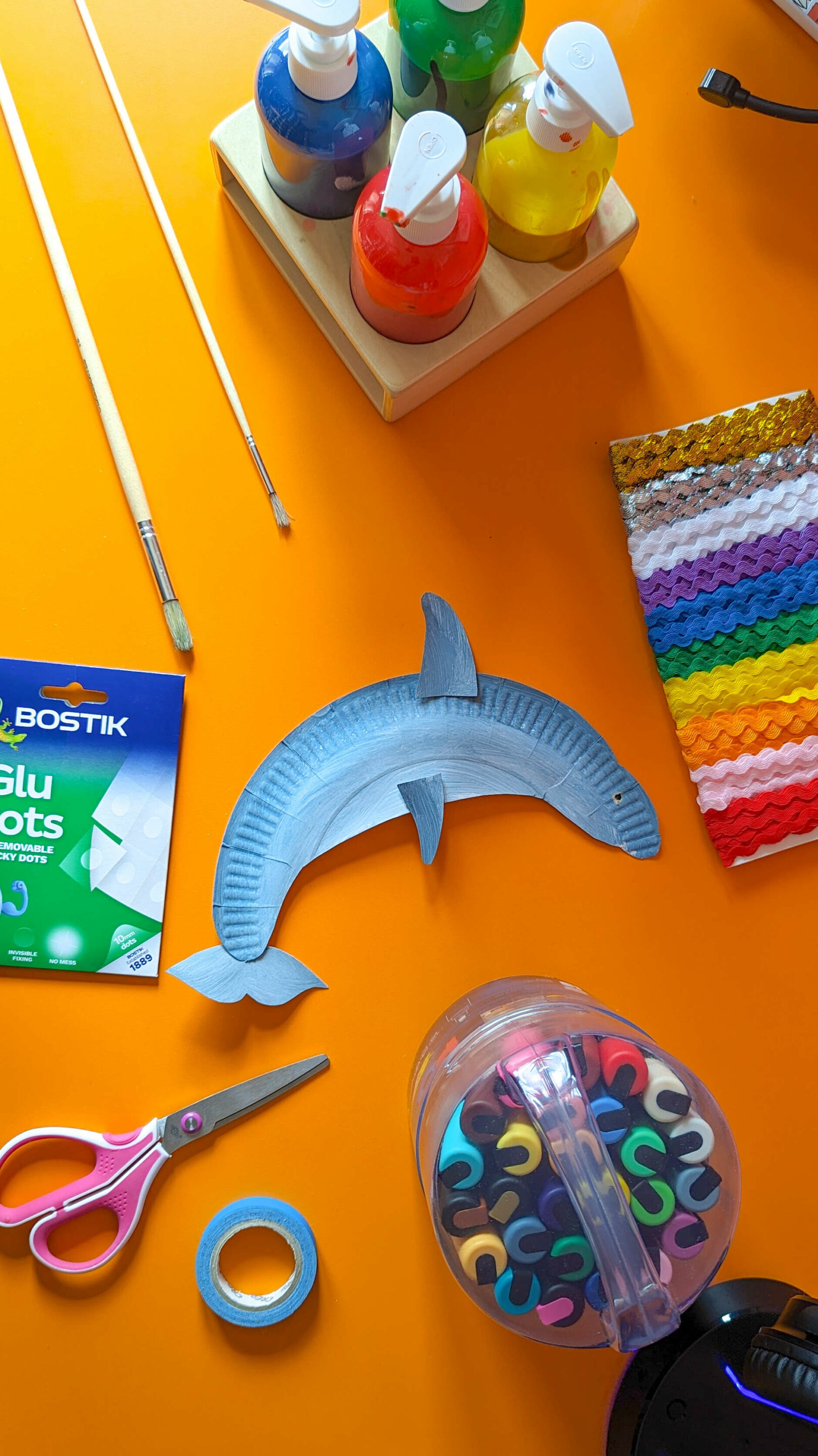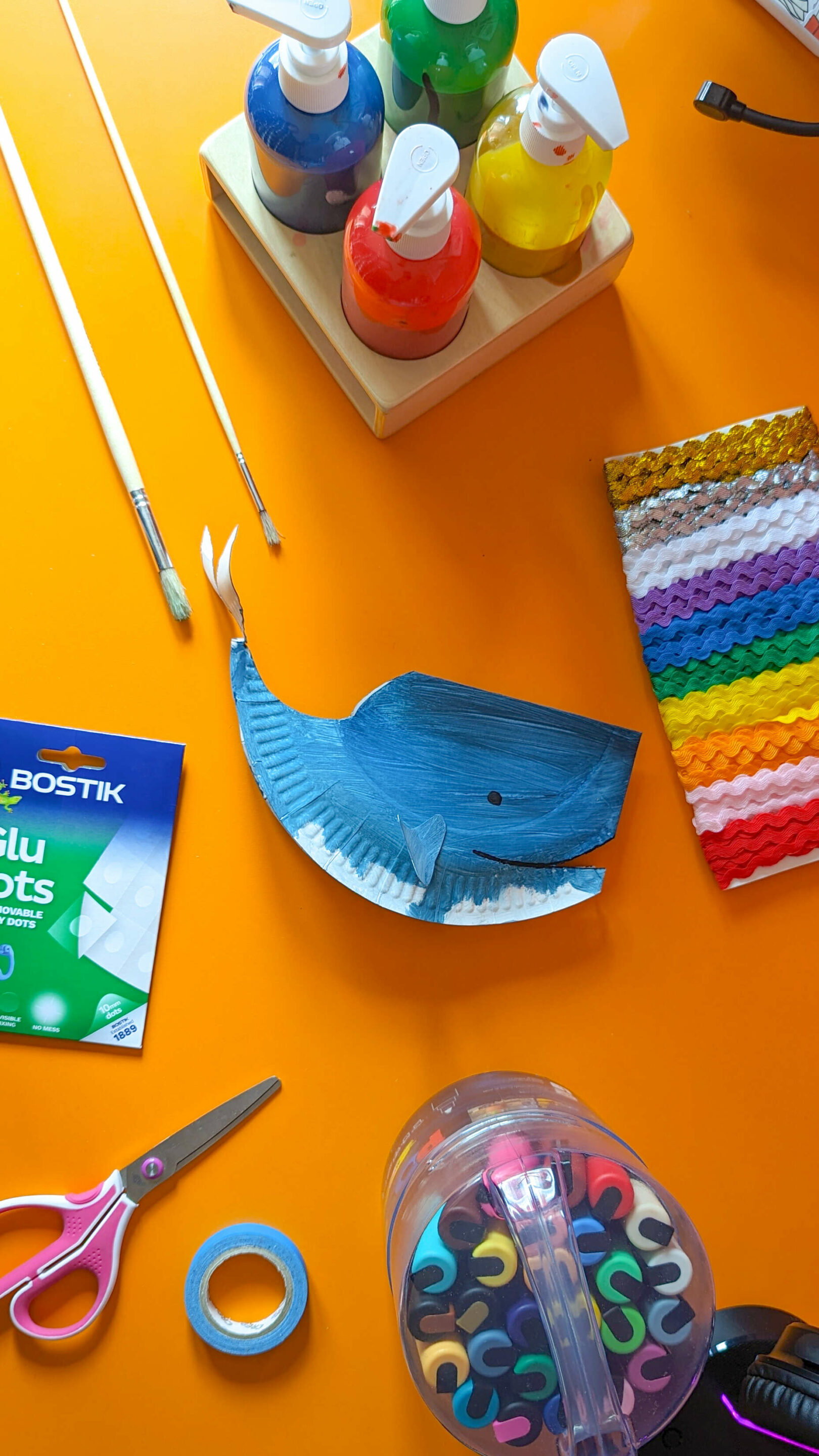World Ocean Day Craft Ideas
We’ve got some fabulous ocean-inspired crafts to try out with your children for World Ocean Day this year. Our brand ambassador Raising Small Readers has created these lovely paper plate crafts of different endangered sea creatures found in the ocean to teach your little ones all about.
World Ocean Day – Jellyfish
Did you know that the peach blossom jellyfish is endangered?
What you’ll need:
- Paper plates
- Ribbon
- Pens
- Scissors
- Crepe paper
- Paint
- Paint brushes
- Tape
Step 1
Cut the plate in half with a wiggly line to be the bottom of the jellyfish.
Step 2
Paint the jellyfish your chosen colours. Leave to dry.
Step 3
Draw on a face and any other details you want to include.
Step 4
Cut some lengths of ribbon.
Step 5
Tape them on the back of the plate so they dangle down.

World Ocean Day – Vaquita
The vaquita is the world’s smallest and rarest marine animal.
What you’ll need:
- Paper plates
- Pens
- Scissors
- Paint
- Paint brushes
- Glue
Step 1
Draw on the paper plate the shape of the Vaquita’s body, tail and fins. Cut these out.
Step 2
Paint the Vaquita a grey blue colour. Leave to dry.
Step 3
Draw on an eye and any other details you want to include.
Step 4
Use glue or glue dots to attach the fins and tail.

World Ocean Day – North Atlantic Right Whale
The North Atlantic right whale is one of the world’s most endangered large whale species.
What you’ll need:
- Paper plates
- Pens
- Scissors
- Paint
- Paint brushes
Step 1
Draw on the paper plate the shape of the North Atlantic Right Whale. Cut along your lines being careful not to cut the tail off.
Step 2
Paint the North Atlantic Right Whale a grey blue colour, leaving white patches at the bottom. Leave to dry.
Step 3
Fold in half and fold out the tail.
Step 4
Draw on an eye, mouth and any other details you want to include.
Step 5
Add on a fin as well if you want to.

Our oceans are so important and it is so important that we protect them and teach younger generations to do the same. For more information about how to protect our oceans, have a read of our blog post “How to Protect Our Oceans”.